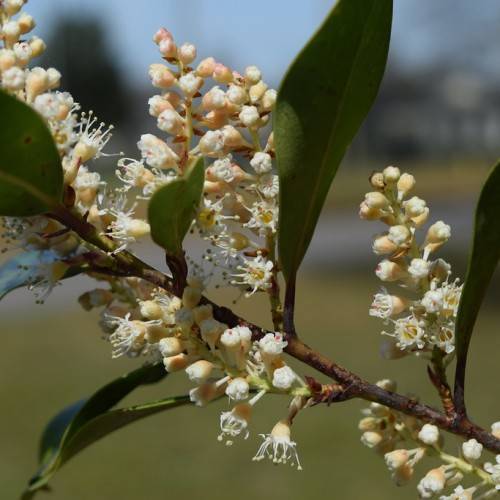
cherry laurel
Prunus caroliniana
Cycle:
Perennial
Watering:
Average
Hardiness Zone:
7 - 10
Flowers:
Flowers
Sun:
Full sun,part shade
Leaf:
Yes
Growth Rate:
High
Maintenance:
Low
Poisonous To Humans:
Yes
Poisonous To Pets:
Yes
Salt Tolerant:
Yes
Invasive:
Yes
Care Level:
Medium
watering
Cherry laurels require regular watering in order to grow and thrive. Water deeply once or twice a week, providing the soil with 1-2 inches of water. During dry periods, it may be necessary to water more often. Avoid frequent but shallow watering that can lead to shallow root growth. Soak the soil to a depth of 8-10 inches whenever possible. During the hottest summer months, cherry laurels will benefit from an additional deep watering once a week. In cooler climates, water may only be needed once every 2 weeks or so.
sunlight
Cherry Laurel requires full sun to partial shade exposure to maintain its healthy appearance. If grown in full sun, the cherry laurel will flower and have a more compact look. When grown in partial shade, it will still flourish, however, the cherry laurel will have a lax growth habit with fewer flowers. Ideally, the cherry laurel should receive 6 to 8 hours of direct sunlight each day, although it can tolerate some shade. When grown in partial shade, the plant should have at least 4 hours of direct sunlight each day. During the hotter months, it is best to avoid direct mid-day sun and opt for early morning or late afternoon hours instead. It should be noted that the cherry laurel may become stressed if exposed to intense midday sun for too long.
pruning
Cherry laurel (Prunus caroliniana) should be pruned twice per year. In the spring, light pruning should be done to reduce overall size and remove dead or diseased branches. In the summer, prune lightly again to maintain desired size and shape. It is important not to prune too much or too often, as this can encourage weak and watery growth.
